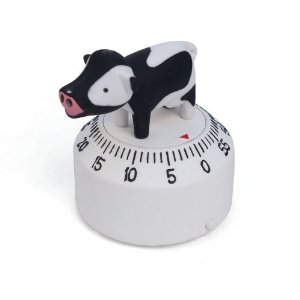By Haley Villines
There is nothing that will make a Mama question the appropriateness of writing an article about behavior management more than being greeted by two grumpy children the morning after submitting the article.
I will tell you that there were no visual schedules on the planet that would have gotten us through the mess of that morning. There was whining and sippy cup throwing and threats of crawling back under the covers. (I’ll let you decide if those were behaviors of the children or possibly those of the adults in our house.)
A couple of hours and a large Sonic iced tea later, I realized that the experience was meant to remind me that there is no one-size-fits-all “cure” for difficult behaviors.
 What works today may not work tomorrow. What motivates and teaches independence to a kindergartner who is lollygagging before bedtime probably isn’t going to help when it comes to getting that same child to clean up his toys or turn off the video game so you aren’t late for basketball practice.
What works today may not work tomorrow. What motivates and teaches independence to a kindergartner who is lollygagging before bedtime probably isn’t going to help when it comes to getting that same child to clean up his toys or turn off the video game so you aren’t late for basketball practice.
That’s why there are so many behavior strategies to choose from. It’s up to us Mamas to have a whole bag of tools and tricks to handle whatever our little darlings throw our way.
My very favorite tool is a timer. I know that many of you probably use a timer with your kids for time outs. Did you know that you can use it to avoid them?
Kids begin to develop a general sense of time when they are around 4 or 5, but they won’t truly understand it until they learn to read a clock – usually in the 1st grade. In fact, the school standard is for 1st grade students to learn to tell time to the hour and half-hour. 2nd grade students are expected to tell time to the nearest five minutes. However, they don’t have to be able to tell time to understand a timer.
The visual nature of a timer takes the argument out of transitions between activities. There’s no arguing with the timer. When it goes off, time is up. Period. No compromising, no arguing, no “2 more minutes.”
Let’s revisit that 5 year old who was taking his sweet time cleaning up toys. I set the timer for a reasonable amount of time (usually 5 minutes) and tell him that when the timer goes off, his toys need to be cleaned up. If they aren’t, I get to keep whatever is left on the floor for a few days. If they are, he gets a small reward (a sticker, a couple of M&M’s, a piece of gum, a quarter for his piggy bank, whatever floats his boat).
If you happen to have a competitive little one, you might even throw in an “I bet you can’t get it done before the timer goes off” just for good measure.
I have used timers with kids as young as two. It usually goes something like this, “Jane, we are going to go to the grocery store. You have 2 minutes and then we will clean up.” Jane says, “No! Play!” I respond calmly, “I’m setting the timer for 2 minutes. When we hear the beep, we will put the toys away.”
I then start the timer and walk away. Two minutes later, the timer goes off. I say, “All done. Bye-bye, toys,” and begin to help Jane put the toys away. She responds to the fact that I gave her some warning that playtime would be ending and followed through on what I said would happen. If she doesn’t go along with it, I stick to my guns, knowing that the next time I use the timer, she will know that her tantrum didn’t work. Eventually, she catches on. Some kids take longer than others, but it usually doesn’t take more than a few times before they realize resisting will get them nowhere.
This tool does not require any special equipment. I’d be willing to bet you have at least one timer in your house. Microwave? Stove? I do prefer digital, simply because it’s more precise, but Grandma’s old-fashioned kitchen timer will work just fine. If you are techno-savvy or need a timer when you are away from home, you may  prefer to use the timer function on your phone clock. If you have an iPhone or other device that allows you to choose the timer’s ending sound, kids enjoy making that choice. It’s much easier to get them out of the bathtub “when the duck quacks” than when the chimes ding.
prefer to use the timer function on your phone clock. If you have an iPhone or other device that allows you to choose the timer’s ending sound, kids enjoy making that choice. It’s much easier to get them out of the bathtub “when the duck quacks” than when the chimes ding.
If your kids don’t seem to understand the use of the digital timer, or if they need a more visual reminder of how much time is left, you may want to check into a visual timer. There are several of these on the market. The most well-known is the Time Timer. The actual timers are a little pricey, but the app is available on iTunes for only $1.99. The premise of this timer is similar to an hourglass. The remaining time shows on the analog clock in red. When the red disappears, time is up. There are several other similar apps available. Some are even free. They are easy to find in iTunes by searching for “visual timer.”
You can use a timer any time you want your child to stop doing one thing and move to another. In our house, we have used timers for brushing teeth, eating meals, cleaning up, turning off the TV, turning off the Wii, sharing toys, coming in from the backyard and countless other activities.
Timers are also very helpful for breaking homework into manageable segments. “Work for 10 minutes and then we’ll take a 5 minute break.” (A great strategy to use with kids who have ADHD.)
Give it a try. You may learn to love the timer as much as I do.
 Haley Villines lives in Rogers. She has been married to her husband since 1999 and is proud to be called “Mama” by a 5-year-old boy and a 2-year-old girl. She also works as a public school speech-language pathologist. She blogs at www.dancingintheminefields.com.
Haley Villines lives in Rogers. She has been married to her husband since 1999 and is proud to be called “Mama” by a 5-year-old boy and a 2-year-old girl. She also works as a public school speech-language pathologist. She blogs at www.dancingintheminefields.com.
